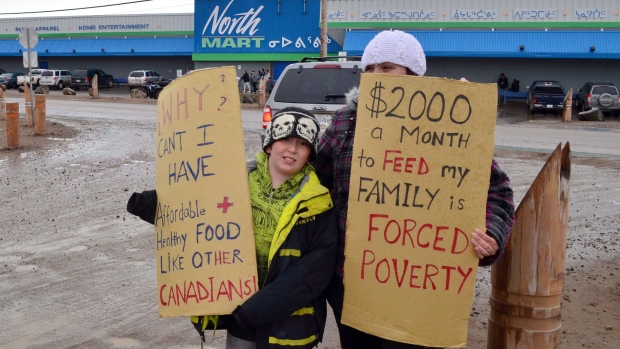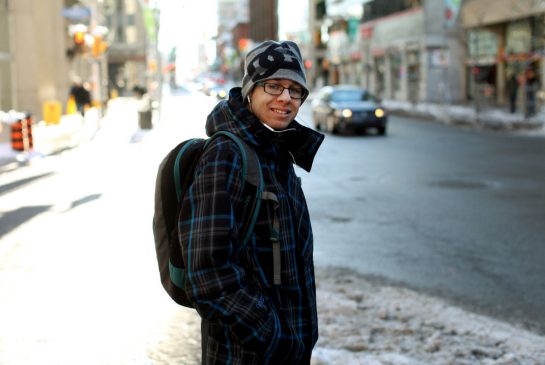With sky-high grocery prices and increasing costs associated with hunting, it’s not uncommon to hear stories of Nunavummiut concerned about their next meal. There are even accounts of people foraging in local landfills for food. Consider this: two litres of orange juice can cost $26. 5 kilograms of flour? $25. And a case of bottled water can be over $100. To put that into context, the median income for the Inuit in Nunavut was just under $20,000 last year.
It costs a lot to transport food to northern communities which is a big factor in grocery store prices. In 2011, the Conservative Government brought in the Nutrition North program to help offset these costs. Retailers are subsidized and are expected to pass on the savings to consumers. But last year, the Auditor General released a critical report outlining issues with the program including a lack of transparency, it wasn’t clear if the savings were actually being passed on to residents.
Putting food on the table has become a big election issue in Nunvaut. We asked the federal candidates to weigh in:
Liberal candidate Hunter Tootoo
“Under the Trudeau government, the Liberal government and myself will work in partnership with communities to address the food security crisis. We know and acknowledge that Northerners know what the problems are, know how to fix it, they just need to be listened to. And that’s something that’s not happening right now under the Stephen Harper and Leona Aglukkaq Conservative government.
I’ve heard people saying that, under this Nutrition North program, the federal government is taking away people’s choices in what they want to buy and what they consider healthy food. They have taken away the right for them to be able to get it on their own, and under a Liberal government we will commit to expanding the program. That’s another thing that we hear up here - we need to simplify the program so that families can actually take advantage of it for themselves and are not held hostage to shop at the two main retailers up here because they are the only ones that are receiving the subsidy.
I think we should take a look at what the program has actually cost the government in the past and ensure that there’s an adequate amount of money in the program to service the people that need it. What can we do right away to make sure that the subsidy and the program is available to all the people and the families that need it? I don’t believe it would be very hard to change some of the regulations in the program to be able to address those issues, and I think that it’s something that could be done fairly quickly.”
NDP Candidate Jack Anawak
“First of all, the NDP put forward a motion in the House of Commons in June on Nutrition North and the need to improve the program. So what I have been doing is focusing on working with the government of Nunavut and companies to come up with a program that will benefit the people and lower the high cost of food in the north. We would look at how we can lower the cost of the cargo rates that make food so expensive to deliver and initiate a comprehensive review of the Nutrition North program with Northerners as full partners to determine ways of directly providing the subsidy.
And secondly, we would work to improve how people can get access to more traditional food because right now it costs a tremendous amount of money, at least $50,000, If you want to go hunting so that you can have traditional foods. You have to buy snowmobiles, you have to buy motor boats and ammunition and clothing. The cost is too high for a lot of people up north to go out hunting so they can have traditional foods.
But also it’s creating a credible program with legitimate criteria for Northerners based on their real circumstances. In addition, providing sufficient funding to meet the needs of all northerners is essential. I think the first thing we would do is a comprehensive review of that program and, as soon as possible, put into place measures that would immediately have an impact on the high food costs up north.”
Green Party Candidate Spencer Rocchi
“We will work towards eliminating poverty in Canada by implementing a Guaranteed Livable Income GLI for everyone. The use of the GLI could eliminate poverty and allow social services to concentrate on problems such as lack of money for food, lack of money for mental health, and support for the people who have disabilities and mental illnesses. The level of payment will be regionally set, so that means that we will be communicating with the leaders and elders within each community in Nunavut, but at a bare level to encourage additional income generation. Through Party coherence with the leaders of Nunavut, we think that significant savings could be realized while simultaneously reversing the negatives of a shame-based system that perpetuates poverty.”
Conservative Candidate and incumbent Leona Aglukkaq (written statement)
“Our Government wants all Nunavummiut to have access to quality, nutritious food at an affordable price. That’s why we have increased funding to the Nutrition North program this year by more than $11 million to ensure the program improves food affordability. Surprisingly, both the NDP and Liberals voted against this $11 million increase of funding to the Nutrition North program while supporting a carbon tax that would increase the cost of food for all Nunavummiut.
Our Government is also moving forward with important reforms to increase the transparency of the program, including point-of-sale-initiatives, to ensure families can see how retailers are passing on the subsidy. As I have said before, the Nutrition North Program can always improve, and that is why we appointed a board of Northerners from across Canada to work with communities and be a direct voice in improving the program.
To further support Nunavummiut, our Government has lowered taxes and introduced the new and enhanced Universal Child Care Benefit (UCCB) to put more money back in the pockets of families. This means that every single family with a child under the age of 6 will receive up to $1,920 per child each year. Additionally, families would receive $720 per year for each child aged 6-17.
Unfortunately, the Liberals and the NDP have vowed to take this money away from Nunavummiut, raise taxes and impose carbon taxes and schemes that will increase the cost of gas, groceries and electricity throughout the Territory.
Our Government will keep taxes low and maintain the benefits that Northern families rely on.”
We spoke with Iqaluit resident and mother of five, Leesee Papatsie who ignited a movement with her now 24,000+ member-strong Facebook campaign “Feeding My Family.”
This interview has been edited for clarity and length.
Brent Bambury: We’ll get to the candidates in just a minute, but first, what was happening in your life and in your community that made you start the Feeding My Family Facebook site?
Leesee Papatsie: A couple of reasons. Growing up we weren’t starving, but there were definite times when we were hungry. And I knew we couldn’t afford food. There were times when we used to go out and pick through people’s garbage for food. And there were a couple of planned protests, and I really wanted to help them and to raise awareness. You know what, this is happening in Canada. There are people hungry, there are kids going to bed hungry. That are lots of families that are like that. Some people are not working, and there are low income situations where they literally worry about the next meal or having a meal for that day. We’ve heard from a lot of mothers who say they don’t eat so their kids can eat. A lot of mothers don’t send their kids to school because they haven’t eaten anything that day.
BB: Earlier you told me about having to go through the garbage when you were growing up. Now, you’re a mother of five. Is it getting worse now, or is it staying the same?
LP: I think it’s a little bit worse than it was before, because food prices are really high and in some communities there are no jobs and no way to earn an income. People struggle to put food on the table.
BB: You work and have a steady job. How much do you spend on groceries a week?
LP: Anywhere from $500 to $600 per week. We do buy extra food for the families we meet who don’t have any food. We’ll give them cereal, bread, maybe used powder, stuff like that.
BB: But $500 to $600 a week, that’s an enormous grocery bill. How many people are in your household?
LP: Right now there’s just three of us, but sometimes four.
BB: And is your food budget supplemented by hunting?
LP: It is. Right now I do a lot of fishing.
BB: And that’s still a source of food for many Inuit households I would guess?
LP: Yes, and I totally believe that there’s no starvation in the North because of country food.
BB: If you were to open a typical refrigerator in Nunavut, what would you see?
LP: For the lower incomes, hardly anything. Maybe butter, and if they are lucky eggs. It’s empty usually.
BB: So you started the Feeding My Family site three years ago, and you wanted to raise awareness. You wanted to get people to demonstrate against the high cost of food in Nunavut. And there was an article in The Globe And Mail that quoted you saying that protesting was against your culture, but you did it anyway. Was it difficult for you to do?
LP: Yeah it was. The first one was very difficult. And we heard from a lot of Inuit communities that protesting is not the Inuit way - why are you doing it? But something needed to be done, so I said I will just do it.
BB: Well now food is clearly an election issue in Nunavut, and you’ve heard from the candidates in your riding. Is any one of them on the right track when it comes to the food crisis?
LP: I like what Jack Anawak said about improving traditional food and culture because that will support our culture. It will support who we are, what we eat and our main diet. Country food is considered one of the most healthy food choices. It’s what we have to work with.
BB: Pretty much all of the candidates mentioned Nutrition North. What is the general feeling about Nutrition North in your community?
LP: I’ll try to explain this nicely - it’s one of those head shakers. It’s a program that’s not working, and the federal government keeps saying well let’s improve it. But they are completely missing the issue.
BB: How are they missing the issue? What’s the part of the issue they don’t see?
LP: First of all, they’re giving funding to the stores that have been ripping off the Northerners for years. Now they say it’s going to show on your receipt when you buy something and at the bottom it’s going to say how much you saved under the Nutrition North program. They want us to believe that. To me it’s really disrespectful.
BB: Is there anything that you feel the candidates missed out on or wish they’d said about the food crisis in Nunavut?
LP: They talked about the program and how it needs to be improved. Well maybe they should just axe the program and do a new program - one that supports Inuit culture. It’s the Inuit that are suffering the most with these food prices. Finding out what our resources are would also be good. I would like to see something that’s already there instead of reinventing the wheel and work with that.
BB: How hopeful are you that a solution will come up in this election? Do you think that this election might be able to, in some way or some small way, solve this food problem in Nunavut?
LP: Well it’s going to take years and years and years to solve it as it is now because there’s so many factors. At least to put some sort of dent in it. I’m hoping to see at least someone trying, at least trying to help. With Leona, it’s obvious that she’s not there. I want to see someone at least try.
BB: Leesee Papatsie thank you for being with us.
LP: Thank you.
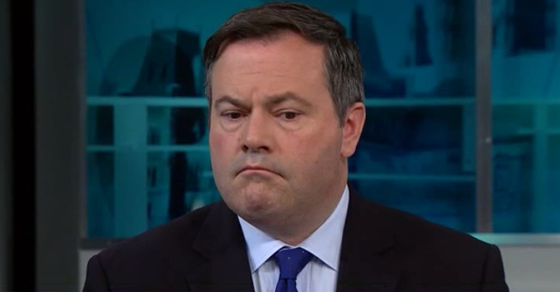
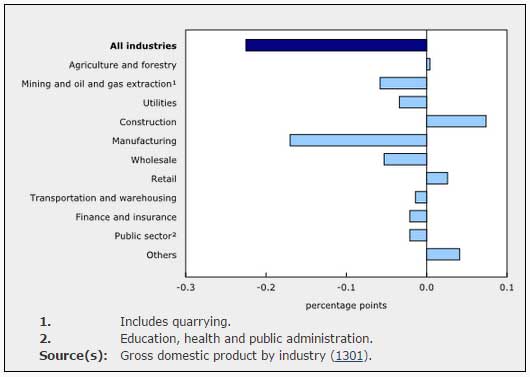
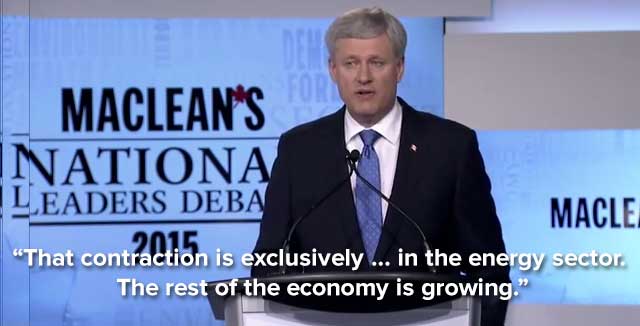
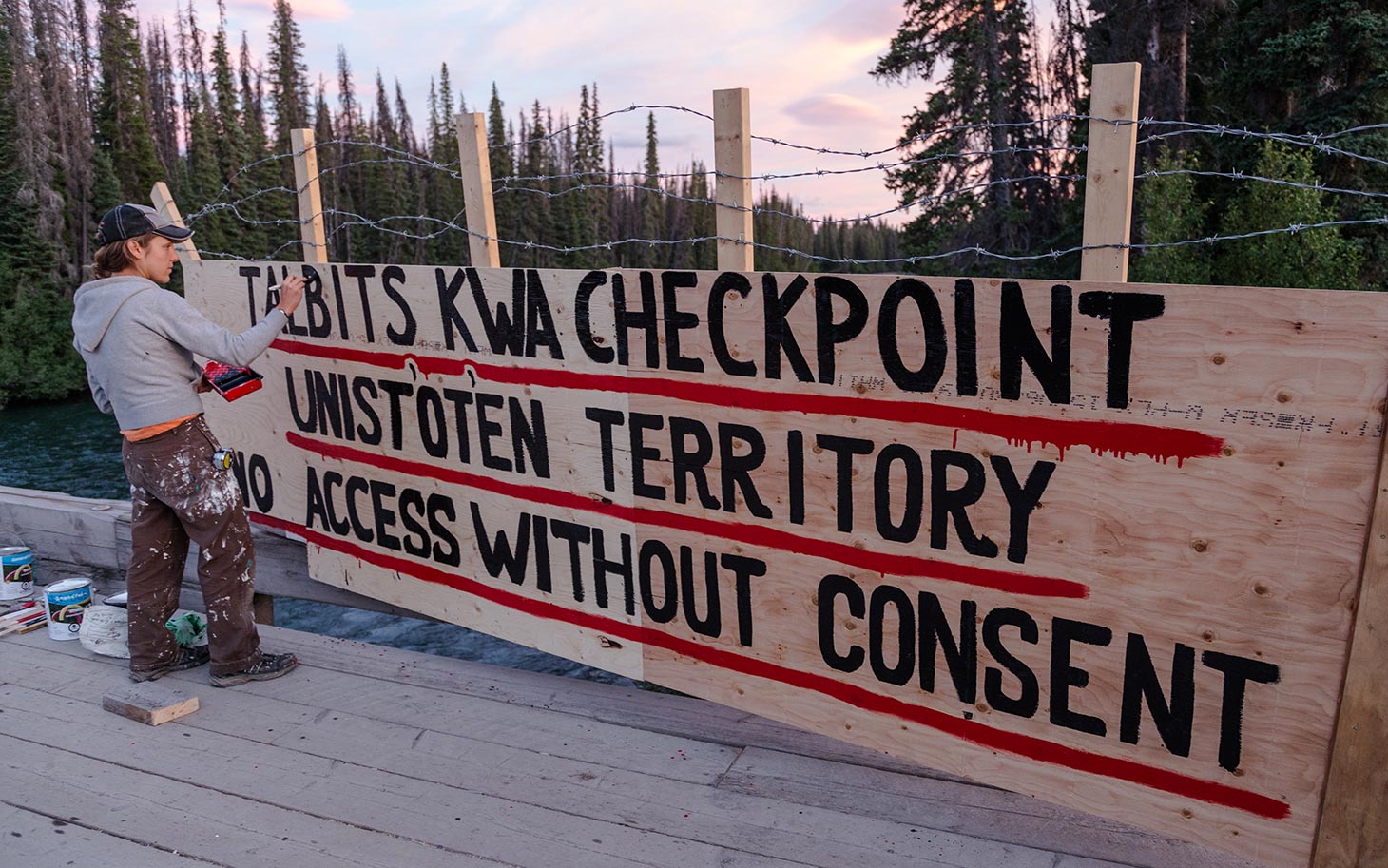
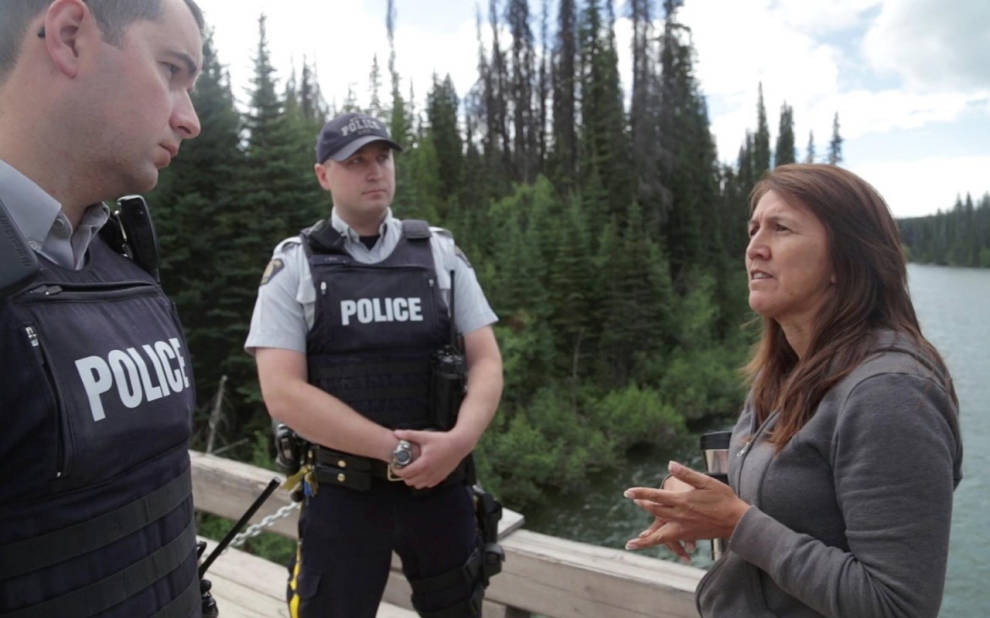
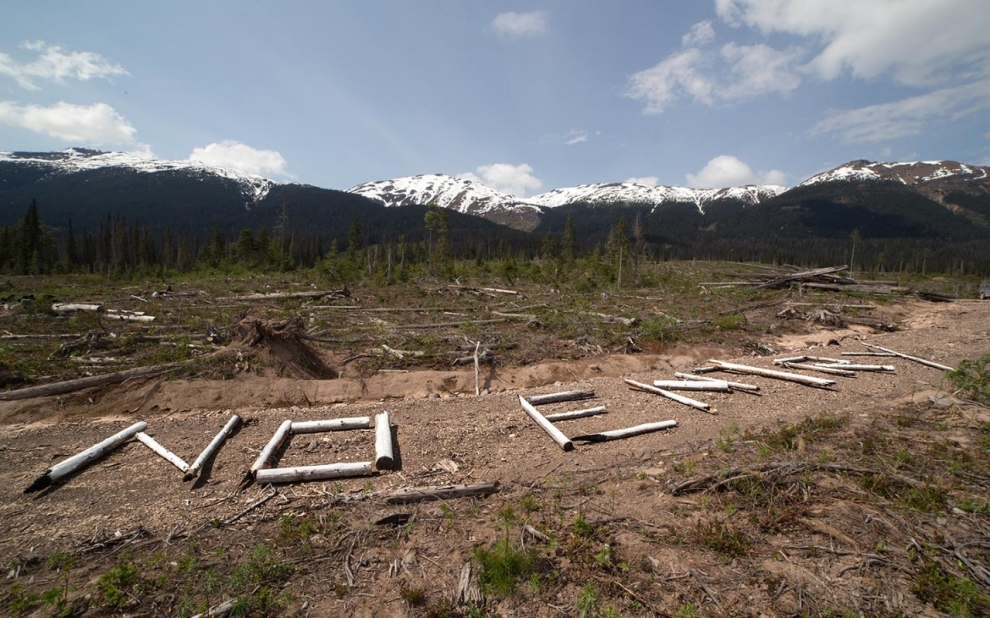
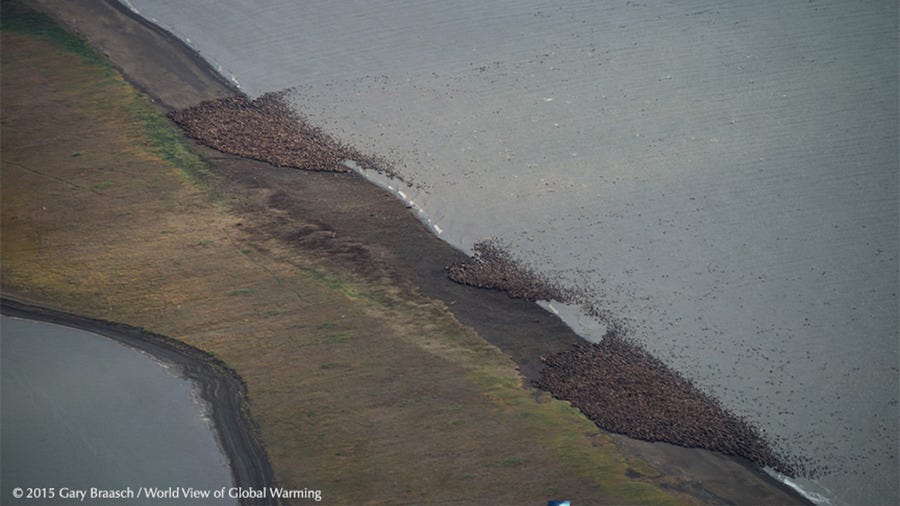
 But you don’t need a kayak to participate. If you wanted to do something right now, you could add your name
But you don’t need a kayak to participate. If you wanted to do something right now, you could add your name 
